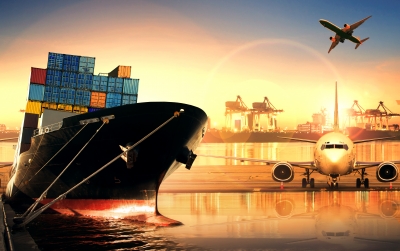By Amit Maheshwari
In the modern logistics landscape, borders no longer represent just physical checkpoints—they are data junctions. Every declaration, manifest, and permit creates digital footprints that determine how smoothly goods flow. Yet across Southeast Asia, and particularly in the Philippines, these footprints often remain scattered across disconnected systems. The result is friction that slows trade, weakens visibility, and prevents the region from realizing its full potential as a connected trade hub.
The Local Picture: Islands of Data in an Island Nation
The Philippines has made steady progress in digital trade modernization. The Bureau of Customs (BOC) now operates nearly 97% of its processes electronically, and initiatives like the Electronic-to-Mobile (E2M) system and TradeNet platform have automated much of the documentation flow.
However, the challenge is not the absence of data—it’s the absence of connection. Each port, forwarder, and customs system generates information, but these systems often don’t talk to each other in real time. A cargo that is visible to a forwarder in Manila may be invisible to its consignee in Davao until hours later. A shipment cleared by customs might still appear “pending” in a port database. For an economy that relies on seamless inter-island logistics, these disconnects translate directly into lost time and higher costs.
This fragmentation creates what experts call “digital dead zones”—moments when information exists, but can’t move fast enough to support decisions. As a result, trucks wait longer at gates, warehouse schedules fall out of sync, and customs verification takes longer than it should.
The ASEAN Context: Integration Still on the Horizon
Across ASEAN, digital integration is emerging as both an economic priority and a technological challenge. The ASEAN Single Window (ASW), designed to link national single windows of member states, has improved cross-border data sharing—but adoption remains uneven.
Singapore and Thailand have fully operational systems that exchange digital customs documents across borders in seconds. Vietnam and Malaysia are expanding interoperability through blockchain-backed pilots. Meanwhile, countries like Indonesia and the Philippines are still working to align data formats, validation standards, and secure API frameworks.
These differences matter because regional trade growth now depends on connected information flows. The World Bank estimates that improving digital interoperability within ASEAN could cut cross-border transaction times by up to 30%. For logistics players, this could mean faster turnaround, fewer manual reconciliations, and reduced operational uncertainty.
The Case for Connected Corridors
Connected data is the invisible infrastructure of modern trade. While governments invest in ports, airports, and expressways, the true corridor of the future is digital—the seamless movement of verified, synchronized information between all trade actors.
Imagine a scenario where:
- Customs clearance data in Manila automatically updates port scheduling systems in Singapore.
- Freight status updates flow from shipping lines to inland trucking firms without human intervention.
- AI systems predict congestion or compliance risks across multiple ports based on shared datasets.
This is not a distant vision—it’s already happening in advanced logistics ecosystems. The key for ASEAN is standardization and trust: standardizing data formats and protocols, while ensuring that every transfer is secure, verified, and immutable.
What the Philippines Can Do Next
To fully participate in the ASEAN digital corridor, the Philippines needs to bridge three critical gaps:
- Interoperability Standards – Harmonize data formats and API protocols between customs, ports, and private logistics systems.
- Public–Private Collaboration – Encourage industry partnerships where government platforms can exchange secure data with freight forwarders, airlines, and logistics tech providers.
- Data Governance Frameworks – Establish clear policies on ownership, access, and privacy of trade data to build confidence among stakeholders.
These steps will not only reduce friction in domestic logistics but also align the country with ASEAN’s broader digital trade initiatives—ensuring that Philippine exporters and forwarders remain competitive in regional supply chains.
A New Kind of Connectivity
For decades, Southeast Asia has focused on building physical infrastructure—bridges, ports, and roads. The next frontier is data connectivity. A connected digital corridor across ASEAN will mean that goods, documents, and intelligence flow together—turning today’s fragmented trade lanes into smart, responsive, and resilient supply chains.
As logistics becomes increasingly data-driven, the countries that connect their information fastest will lead the next phase of trade growth. The Philippines, with its strong digital foundation and growing innovation ecosystem, has the opportunity to move from participant to architect in ASEAN’s connected future.
PREVIOUS COLUMN: From Automation to Intelligence: How AI Is Reshaping Trade Compliance






